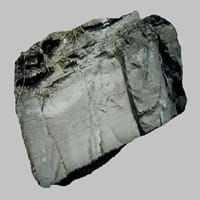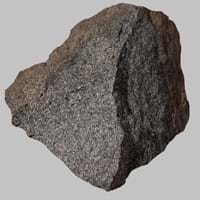Definition
A sedimentary rock, deposit of a submarine turbidity currents and are composed of layered particles
Gabbro is an intrusive igneous rock which is chemically equivalent to plutonic Basalt
Origin
European Foreland Basins
Germany
Discoverer
Arnold H. Bouma
Christian Leopold von Buch
Etymology
From Medieval Latin turbiditas, from Latin turbidus (turbid). Turbidity current is from 1939
From Latin glaber bare, smooth, bald
Class
Sedimentary Rocks
Igneous Rocks
Sub-Class
Durable Rock, Soft Rock
Durable Rock, Hard Rock
Group
Not Applicable
Plutonic
Other Categories
Coarse Grained Rock, Fine Grained Rock, Opaque Rock
Coarse Grained Rock, Opaque Rock
Texture
Mud-rich, Sandy
Phaneritic
Color
Black, Brown, Colourless, Green, Grey, Pink
Dark Grey to Black
Durability
Durable
Durable
Scratch Resistant
Yes
Yes
Appearance
Dull and Banded
Veined and Shiny
Interior Uses
Bathrooms, Countertops, Decorative Aggregates, Flooring, Homes, Interior Decoration
Countertops, Decorative Aggregates, Homes, Interior Decoration
Exterior Uses
As Building Stone, As Facing Stone, Paving Stone, Garden Decoration
As Building Stone, As Facing Stone, Garden Decoration, Office Buildings, Paving Stone
Other Architectural Uses
Curbing
Curbing
Construction Industry
As Dimension Stone, Cement Manufacture, Construction Aggregate, for Road Aggregate, Making natural cement
As Dimension Stone, Building houses or walls, Cement Manufacture, Construction Aggregate, for Road Aggregate
Medical Industry
Not Yet Used
Not Yet Used
Antiquity Uses
Artifacts, Monuments, Sculpture
Artifacts, Monuments, Sculpture
Commercial Uses
Cemetery Markers, Creating Artwork
Cemetery Markers, Commemorative Tablets, Laboratory bench tops, Jewelry, Sea Defence, Tombstones
Types
Not Available
Not Available
Features
High silica content, Host Rock for Lead
Smooth to touch
Archaeological Significance
Famous Monuments
Data Not Available
Data Not Available
Famous Sculptures
Data Not Available
Data Not Available
Pictographs
Used
Not Used
Petroglyphs
Used
Not Used
Formation
Turbidite is a type of sedimentary rock formed when a river carries or transports pieces of broken rock as it flows. These particles then settle down and are subjected to high temperature and pressures hence forming Turbidite.
Gabbro, a mafic rock, forms due to cooling and crystallization of magma underneath Earth's surface.
Mineral Content
Coesite, Quartz, Sand
Augite, Olivine, Plagioclase, Pyroxene
Compound Content
CaO, Carbon Dioxide, MgO
Aluminium Oxide, CaO, Chromium(III) Oxide, Iron(III) Oxide, Potassium Oxide, MgO, Sodium Oxide, Silicon Dioxide, Sulfur Trioxide
Types of Metamorphism
Not Applicable
Impact Metamorphism
Types of Weathering
Biological Weathering, Chemical Weathering, Mechanical Weathering
Chemical Weathering
Types of Erosion
Chemical Erosion, Coastal Erosion, Sea Erosion, Water Erosion, Wind Erosion
Coastal Erosion
Grain Size
Fine to Coarse Grained
Coarse Grained
Fracture
Splintery
Conchoidal
Streak
White, Greenish White or Grey
Black
Porosity
Very Less Porous
Highly Porous
Luster
Metallic
Not Available
Cleavage
Disjunctive
Not Available
Specific Gravity
2.46-2.73
2.86-2.87
Transparency
Opaque
Opaque
Density
1.6-2.5 g/cm3
2.7-3.3 g/cm3
Specific Heat Capacity
Not Available
Resistance
Heat Resistant
Impact Resistant, Pressure Resistant, Wear Resistant
Deposits in Eastern Continents
Asia
Not Yet Found
India, Russia
Africa
Western Africa
South Africa
Europe
Austria, Belarus, Romania, Switzerland, United Kingdom
Germany, Greece, Italy, Scotland, Turkey
Others
Not Yet Found
Greenland
Deposits in Western Continents
North America
Canada, USA
Canada, USA
South America
Brazil, Colombia
Brazil, Colombia, Venezuela
Deposits in Oceania Continent
Australia
New Zealand, Western Australia
New Zealand, Queensland
All about Turbidite and Gabbro Properties
Know all about Turbidite and Gabbro properties here. All properties of rocks are important as they define the type of rock and its application. Turbidite belongs to Sedimentary Rocks while Gabbro belongs to Igneous Rocks.Texture of Turbidite is Mud-rich, Sandy whereas that of Gabbro is Phaneritic. Turbidite appears Dull and Banded and Gabbro appears Veined and Shiny. The luster of Turbidite is metallic while that of Gabbro is not available. Turbidite is available in black, brown, colourless, green, grey, pink colors whereas Gabbro is available in dark grey to black colors. The commercial uses of Turbidite are cemetery markers, creating artwork and that of Gabbro are cemetery markers, commemorative tablets, laboratory bench tops, jewelry, sea defence, tombstones.










